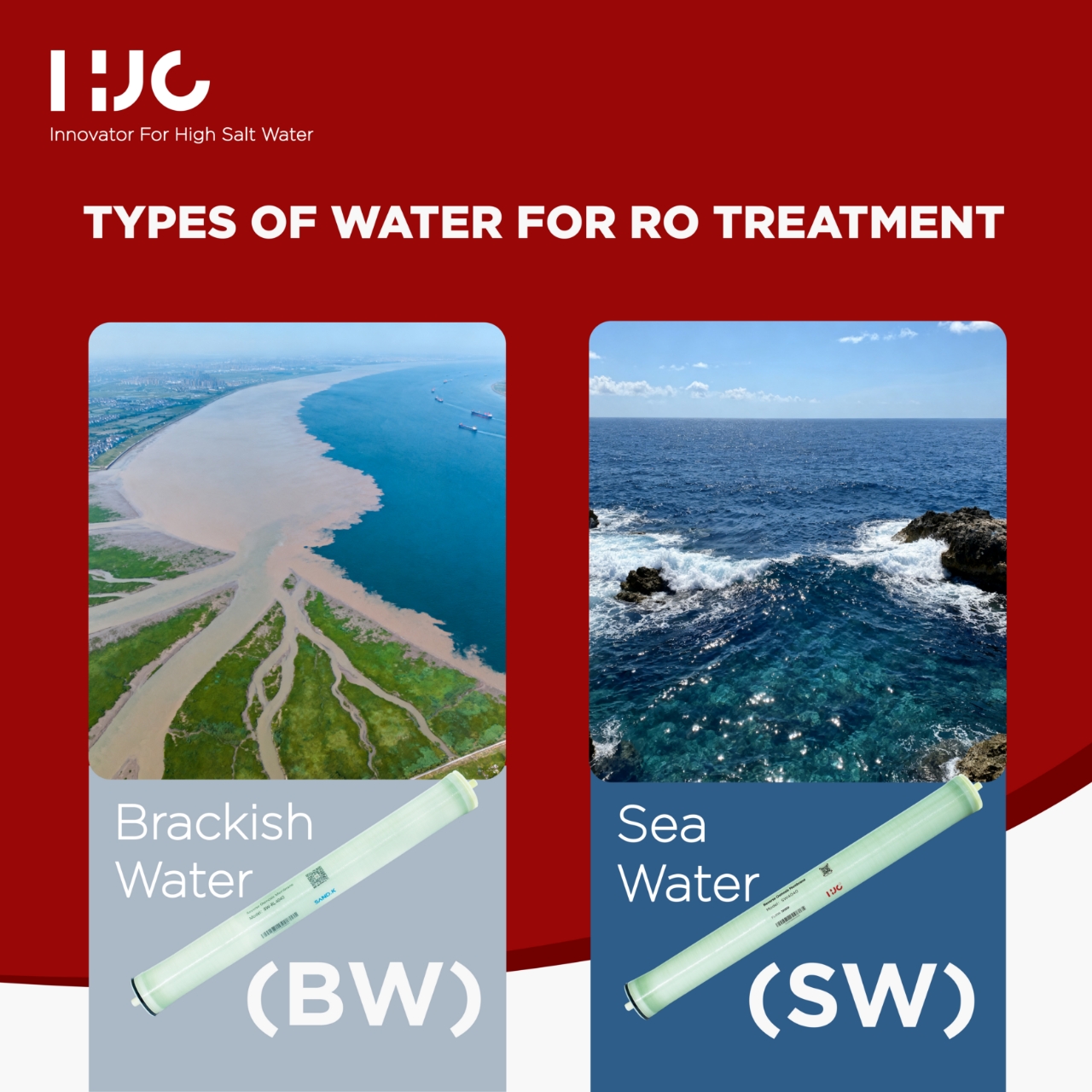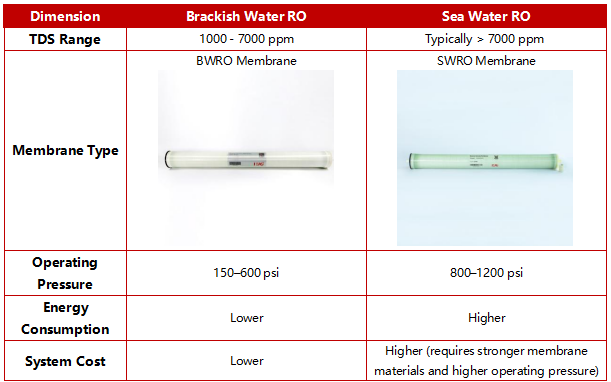In industrial water treatment, the salinity of the feedwater directly determines RO (reverse osmosis) system design, membrane selection, and overall operating efficiency. Based on total dissolved solids (TDS), RO membranes are broadly classified into Brackish Water RO (BWRO) membranes and Seawater RO (SWRO) membranes. Understanding the characteristics of different water sources is essential for selecting the right membrane and ensuring efficient, cost-effective operation.

1. Brackish Water RO(BW RO)
TDS Range: 1,000–7,000 ppm
- Water characteristics: Salinity between freshwater and seawater, slightly brackish; relatively easier to treat.
- Typical sources: Estuaries, saline aquifers, freshwater–seawater mixing zones.
RO Membrane Selection:
- For standard sources: Conventional BWRO membranes are sufficient, operating at relatively low pressure.
- For complex feedwater or near the upper limit (~7,000 ppm): Fouling-resistant BWRO membranes are recommended to ensure long-term stable performance.
Applications: Municipal water supply, agricultural irrigation, light industry.
Key Note: When TDS approaches or exceeds 7,000 ppm, conventional BWRO membranes typically become unsuitable. Higher-pressure or fouling-resistant membranes should be considered.
2. Sea Water RO(SW RO)
TDS Range: >7,000 ppm
Typical sources: Seawater, high-salinity groundwater, salt lakes.
- Ultra-high-salinity inland water: e.g., deep saline groundwater, concentrated brines from industrial processes.
- Seawater: Global average ~35,000 ppm TDS.
- Water characteristics: Extremely high salinity and osmotic pressure, placing the greatest demands on RO system design and membrane durability.
RO Membrane Selection: SWRO membranes, engineered for high operating pressure, durability, and superior salt rejection.
Applications: Seawater desalination plants, coastal and island water supply, power plant cooling, ships, offshore platforms, mining, and other high-salinity applications.

In practice, selecting the right RO system requires a comprehensive evaluation of feedwater salinity, treatment goals, and lifecycle cost. Only with the right balance of technical performance and economic feasibility can optimal results be achieved.
HJC specializes in high-salinity RO membranes, providing complete solutions for both brackish water and seawater applications.
Whether for municipal supply, industrial processes, or large-scale seawater desalination, HJC delivers efficient, stable, and reliable RO membrane solutions.
Want to learn more about selecting the right RO membrane?
Contact HJC — where professional water treatment solutions safeguard your project.

